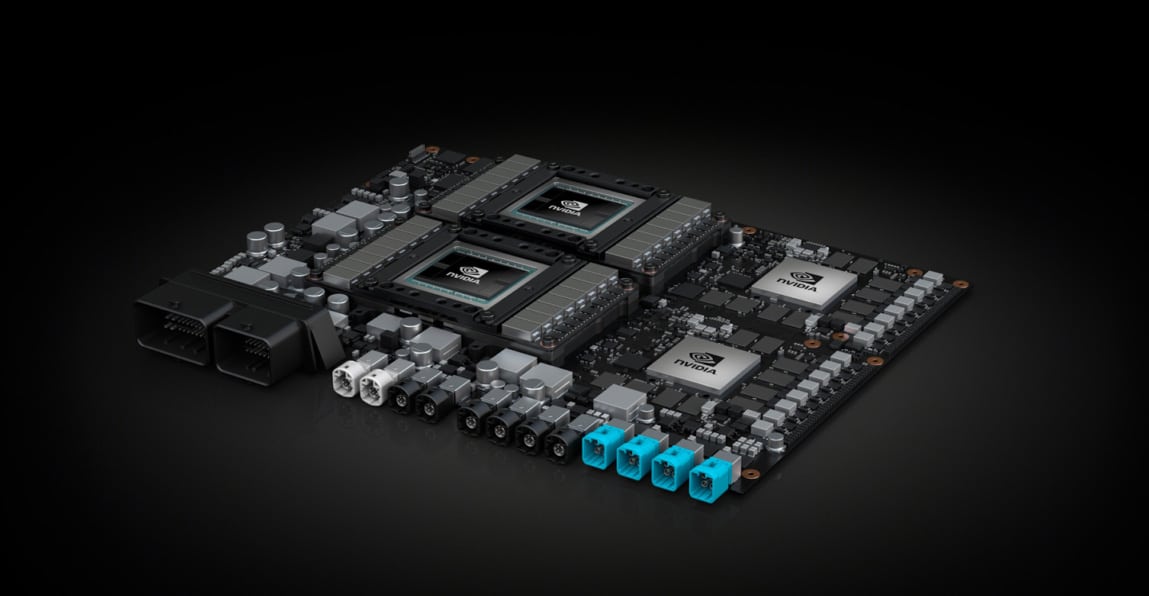Cars with some autonomous capabilities are already here: here’s now to understand what’s coming next.
Self-driving cars are no longer science fiction. Today, you can already buy a car that steers itself through rush-hour traffic on the freeway and parallel parks. However, for a car that can do the same job as a chauffeur, you’ll have to wait a few years.
The “driverless” revolution is rolling out in stages, much like the first cars developed from slow, steam-powered contraptions to gasoline-powered automobiles to now fully electric vehicles. The key to making the leap forward from the prototypes packed with racks of servers already roaming California’s freeways to vehicles you can drive off the lot: putting more computing power into less space.
That’s coming, thanks to breakthroughs such as NVIDIA’s Xavier System-on-a-Chip. Detailed at this month’s Consumer Electronics Show, in Las Vegas, Xavier is the most complex system on a chip, or SoC, ever created, with more than 9 billion transistors and representing an investment of $2 billion in research and development.
So what kind of capabilities can this kind of computing horsepower unleash? To define the path to fully realized autonomy, the Society of Automotive Engineers (better known as SAE International) detailed six categories of autonomous capability to establish clear benchmarks in a field of technology that has so many different elements in play. (These guidelines supersede NHTSA’s earlier standards.)
Here’s a Cliffs Notes version of what those are, and when we’re likely to see them on the streets.
Level 0 – Your grandparents’ 1970s station wagon
Consumer vehicle introduction: 1900-present
At its minimum, level 0 is essentially a seat and steering wheel, with zero automation. (Sorry, automatic transmissions don’t count.) That covers a broad range, from Clark Griswold’s vinyl-sided station wagon in National Lampoon’s Vacation to much more modern vehicles.
Contemporary cars with driver assistance systems that issue visual and audible alerts such as Volvo’s Lane Departure Warning or Nissan’s Moving Object Detection fit here, too. But beeps and flashes are the limit — the car remains totally dependent on human drivers for steering and speed.

Level 1 – The car in your garage
Consumer vehicle introduction: 2007
Most cars today include gadgets such as cameras and sensors to help limit driving speeds or provide assisted braking. Specific examples include Ford’s Collision Warning with Brake Support, which decelerates the car when it gets too close to another vehicle, and Nissan’s Intelligent Cruise Control, which sets speeds when taking curves and controls following distance. You’re still in for a rough ride if you take your hands off the wheel.
Level 2 – Available in some luxury cars
Consumer vehicle introduction: 2014
Most of today’s advanced driver assistance systems fall under level 2, including Tesla’s Autopilot, Cadillac’s Supercruise and Volvo’s Pilot Assist. Where level 1 vehicles control either speed or steering, vehicles at level 2 can control both simultaneously, and may include features like lane centering. Autonomous mode is limited to certain conditions, and human drivers still have to take control when driving over any terrain more complicated than highways or clearly marked roads.
While cars with level 2 autonomy are on the road today, there’s room for advancements here.
The next step: merging input from sensors placed both inside and outside the car, so a vehicle can react to its driver — and the environment around it — more intelligently. Even if the car is not driving itself, it can take action to keep the driver and passengers safe. NVIDIA calls this Super Level 2, and it’s a task that will take a great deal of computing power.
Level 3 – Where only a few, like Audi, dare venture today
Consumer vehicle introduction: 2018
Level 3 vehicles can steer, accelerate or decelerate, and pass other cars without human input. They can also maneuver around incidents or traffic jams. Where level 2 cars require drivers to have at least fingertips or a pinkie on the wheel, level 3 systems enable drivers to take their hands off the wheel and feet off the pedals — but only in specific situations. Humans still need to be ready to take back control when the car requests it.
Some manufacturers identify the handoff from autonomous driving to human driving as a risk, leading companies like Volvo to skip level 3 altogether. “If you are doing something else, research shows that it could take two minutes or more before you can come back and take over. And that’s absolutely impossible,” said Volvo CEO Hakan Samuelsson in an interview with Bloomberg.
Audi, however, doesn’t agree. The German manufacturer is rolling out its flagship Audi A8 as the first commercially available level 3 vehicle. Set to hit the road in 2018, the car can drive itself up to speeds of 60 km/h, handling stop-and-go traffic during congestion and rush hour, and will give drivers 10 seconds to resume control.
Level 4 – Offices and cinemas on wheels
Consumer vehicle introduction: 2021
According to SAE guidelines, a level 4 car should be able to drive itself safely, “even if a human driver does not respond appropriately to a request to intervene.” A level 4 car will slow down, pull over or park itself at a safe spot if the driver doesn’t take control when requested, which might happen in tougher navigation like off-road driving or unmapped roads.

It’s a task that will take enormous amounts of computing power. And today’s autonomous test cars typically carry a trunk full of computing gear. That’s changing, however. NVIDIA plans to enable level 4 autonomy with NVIDIA DRIVE Xavier SoC, which offers 30 trillion operations per second of performance in a compact package (see “NVIDIA Xavier, World’s Most Powerful SoC Brings Dramatic New Capabilities”).
The first level 4 cars are scheduled to launch in 2021. And if the manufacturer’s vision for its self-driving fleet is realized, these cars will not just be transport units, but will also resemble small offices, theaters or hotel rooms on wheels.
Level 5 – The Lexus 2054 from Minority Report
Consumer vehicle introduction: mid-2020s
With level 5 cars, all human involvement can stop after you tell your vehicle where you want to go. These cars can do anything the human driver can do, without restrictions. Cars at level 5 can become automated travel pods that can drive under any situation, from city driving to off-road conditions.
While it may take a while before level 5 cars hit the consumer market, you may see something approaching it soon in confined or geo-fenced areas (making them, strictly speaking, level 4 vehicles). In the meantime, concept cars like Audi’s Aicon — whose interior looks more like a first-class plane cabin than a car — give car enthusiasts a glimpse of what will be hitting our roads in the future, without the need to buy a ticket at the local cineplex.
Learn more about autonomous driving on the NVIDIA Technical Blog.
